You are in control of your fish tank, right until you have to leave town for a few days. But how long can your pet fish go without eating? Will your fish be able to live a couple of days without being fed? Would the aquarium survive on its own for a whole week? If so, exactly how long can your pet fish go without food, and will they turn ill during this period? Is there a way around starving them if you’re leaving for a vacation?

How long can pet fish go without sustenance?
In the wild, fish rarely get to eat a meal each day.
Some of them will experience long periods without consuming any food.
For example, the female mouth-brooding African Cichlid can go up to a month without eating when holding baby fry in her mouth.
That being said, here’s how long the average freshwater fish can go without food:
A healthy, grown-up aquarium fish can go from 3 days to 1 whole week, without eating any food. However, some fish species like Oscars and Gouramis can live up to 2 weeks without eating.
Whether in nature or in an aquarium – an adult fish has sufficient body mass and fat reserves to skip a couple of meals once in a while. Therefore, if you are planning a weekend away, you don’t have to worry if your fish would survive without being fed.
The truth is we tend to overfeed our pets.
We forget they originate from surroundings where they don’t have their meals regularly.
When it comes to fish fry, however, this is not the case.
When fish are first born they need to eat a few times per day.
Not feeding baby fry enough may cause deformities, sickness, or even death.
Don’t starve your fish, for suggestions on what to feed your aquatic pets check out our article The Ultimate Guide to Fish Food: Pros and Cons & Best Choices for Different Fish Species.
Overview chart for individual fasting tolerances of popular freshwater fish
Although fish are hardy in general, their fasting tolerance varies depending on their breed.
Take a look at a chart that lists the number of days popular freshwater fish can live without food:
| Type of fish: | Period it can safely live with no food: |
|---|---|
| Betta | 1 to 2 weeks |
| Goldfish | up to 10 days |
| Koi Fish | up to 2 weeks |
| Guppies | 7 to 10 days |
| Danios | up to 14 days |
| Tetras | up to 10 days |
| Platies | between 10 and 14 days |
| Mollies | up to 2 weeks |
| Angelfish | up to 1 week |
| Rasboras | up to 1 week |
| African Cichlids | up to 10 days |
| Plecos | 10 to 14 days |
| Oscars | up to 2 weeks |
| Swordtail fish | maximum of 14 days |
| Corydora catfish | up to 2 weeks |
| Barbs | up to 14 days |
| Discus | up to 14 days |
| Loaches | up to 10 days |
| Gouramis | up to 2 weeks |
The list above is based on my discussion with other fish keepers with hands-on experience and my own observations with some of these fish.
Despite all the evidence that fish have higher fasting tolerance than we think, I do not recommend leaving your pets without food for this long.
Such an endeavor is hazardous and you might end up losing your small friends.
There are very few reasons you’d want to fast a pet fish for more than a day:
- You suspect the fish is constipated. A constipation taht’s got out of control can make your fish’ belly so swollen that it actually presses against its swim bladder. This in turn could force your fish to float sideways or upside-down which is not ideal.
- Your fish has lost its appetite due to sickness and you don’t want to spoil the water’s quality unnecessarily.
- You’re moving to another residence.
- Goind on a vacation.
Although no one can precisely tell the time a fish can survive without eating, there are some additional factors you might want to take a look at.
Are your pet fish carnivorous or herbivorous?

The first group eats plants and algae. The plant material herbivores consume is harder to break down and they need food more often in order to get sufficient nutrition.
A good example of aquarium herbivores are some types of plecos, the otocinclus, and some other fish that may eat algae. Carnivores such as the Betta eat meat, and they often spend days without eating in the wild because of an unsuccessful prey hunt.
Actually, most fish with sharp teeth like Oscars, Arowanas, or the group of freshwater eels are meat eaters. Therefore they are able to endure long periods with no food and should actually be fed less often for optimal long-term results.
What’s the size and age of your fish?

Bigger and older fish are hardier, as they have enough body mass and fat reserves to use in case of extended periods of hunger.
For example, Gourami fish will last longer without food than a most of the really small fish such as the Guppy. And the same goes for age.
Younger fish have less fat reserves and a faster metabolism, so they need to be fed more frequently.
There are some tricks you can use before you leave, which will help reduce the appetite of a fish.
It’s well known that most fish are not active during the night.
You can set the light timer to 6 or 8 hours, instead of 12, for example.
Shorter daytime will diminish their activity and their need for a meal.
Another trick you can use is to slowly lower the fish tank’s temperature. Be careful not to lower it with more than 2 degrees and do make sure the change is gradual.
After all, you just want to slow down their digestive processes, not to send them to the North Pole.
Is your aquarium system ecologically stable?
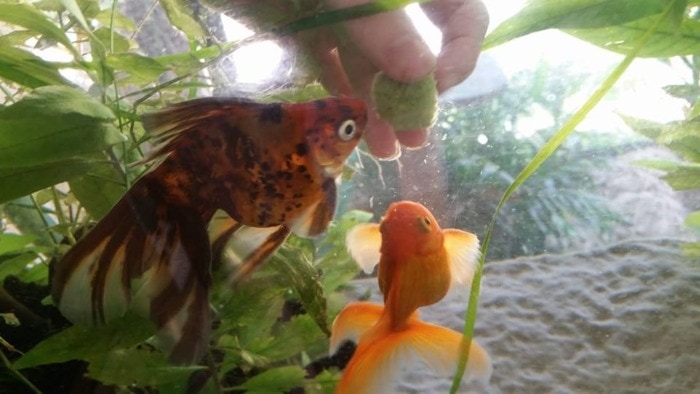
Fish in established aquarium systems tend to survive for longer when they’re left on their own.
This is because they’re well adapted to the conditions in the tank and their stress levels are low.
And while leaving them without food for a few days will make them uncomfortable, it won’t affect them as it would if the aquarium was new.
On the other hand, when fish get introduced to an aquarium, they need time to adapt to their new environment.
Naturally, this leads to elevated stress levels which drop once the fish is fully accustomed to its new home.
Think of it like moving into a new city.
When you move to another city, you need to learn its layout, meet new people, and find a place to live.
Needless to say, all of this can make you feel overwhelmed, so the last thing you’d need would be to worry about food.
All in all, I’d say it would be better to find an alternative way to feed your pets if you’re going to be away and your tank was recently set up.
How to feed starving pet fish while you’re on a vacation?
Automatic Feeder
Knowing that fish are tougher than we tend to think, you can now rest assured that leaving your aquarium without food supplies for a weekend is not an issue.
However, that’s not really necessary.
Take a look at how to properly feed your fish when you are on a vacation: The best way to feed your pet fish while you are away or on vacation is by using an automatic feeder like this one below.
An automatic fish feeder lets you organize a feeding schedule and control the portion size of each meal.
This way you can be sure your fish will not only survive but live healthily in your absence.
Of course, you can ask a friend or a relative to feed your pets.
However, with this option, you risk the caretaker overfeeding your aquarium fish.
In this case, you might end up with an ecologically imbalanced fish tank, which can lead to a plethora of other issues such as a spike in ammonia levels. Or an outbreak of small worms that can be dangerous to your shrimp, depending on the species.
As I have mentioned before in my articles, I have been using an automatic fish feeder for a couple of years now. I was lucky enough to find the most suitable one for my needs within short research.
It turned out to be the one Eheim manufactures.
I first got it to avoid overfeeding my fish.
However, I realized its real potential a few months later when I had to go on vacation for 6 days.
I set the schedule for this amount of time (very easy to do) and went away without any concerns.
When I got home, I found all of my fish in good health, well-fed, and the aquarium was as clean as I left it.
I would also suggest that you buy Eheim’s food station that goes along with the feeder.
It prevents any scattered food particles on the water’s surface and lets the meal soak properly before sinking.
Vacation Feeder
To simplify the process of feeding your fish while you are away, you can try this Vacation Feeder with slow release as well.
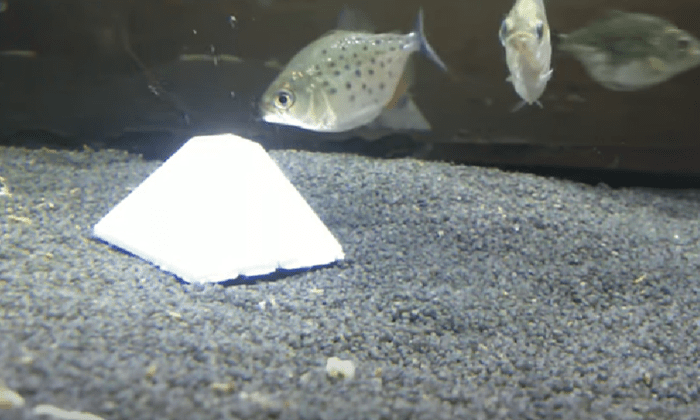
I’ve never used it, but I know a few people have, and it worked fine for them.
When you drop the pyramid in the tank, it slowly releases food over time.
However, if you choose this option, you will not be able to control the amount of food the fish consume. It might finish before you come back, or it might remain uneaten.
Make sure to use this type of feeder in a fish tank with a well-working filtering system.
It’s also worth noting that your fish might pass up on the vacation feeder if they’re too accustomed to their regular diet.
With time, this can elevate ammonia to dangerously high levels and harm the tank’s inhabitants.
Additionally, the feeder block might dissolve quicker than expected and lead to an ammonia spike.
Some aquarists report they experienced this when they placed the block underneath their aquarium filter.
Due to these concerns, it would be a good idea to perform a test before you go on vacation.
You can do this by putting the feeder block inside the aquarium, and measuring the water parameters in the following few days.
If you notice they’re out of the ordinary, then you should invest in an automatic feeder or find a fish sitter.
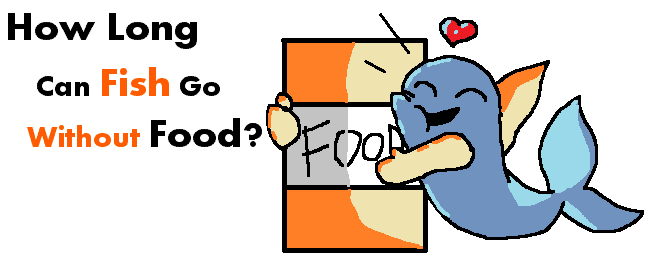
My Final words
Healthy fish can safely go with no food for up to a week without this causing an issue to their well-being.
If you need to be away for longer or have fish fry in the aquarium, you should likely make some preparations before leaving.
Furthermore, it’s advisable to get an automatic fish feeder to ensure that your pet fish can eat regularly while you’re gone.
You are now ready to go and enjoy your vacation.


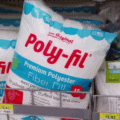




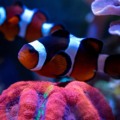

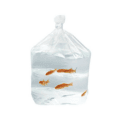

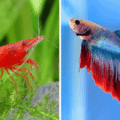
Thank you.
A very helpful and well written article.
Best regards,
Adrian.
I thought this was very helpful. My beta fish is having a hard time swimming up.
Bob. Form your comment …. It appears as you are judging form vantage of the majority of overfeed, overweight human population stuck in their own house-cum-car-cum-drive-through cage. Normal animals do eat much less than pets and us humans. The comparison is quite uneducated.
Thank you for given me additional knowledge. But how do I get the fish feeder being in Nigeria?
Thanks for sharing this
clown killifish lifespan
How many days flowerhorn cant eat?
crappy article, we dont want fish in our closed environments tom mealey survive! we want them to be happy and thrive. Lets say I leave you alone for a few days in a cage and dont feed you ??? is this ideal? will you be happy and healthy?
Your attitude is crappy – It’s a posed question and I just answered it. NOWHERE in this article, I suggest it should be done. If you weren’t so self-consumed you’d notice that further down the article I give solutions on how NOT TO leave your fish starving while away…
Next time read before expressing empty opinions, please.